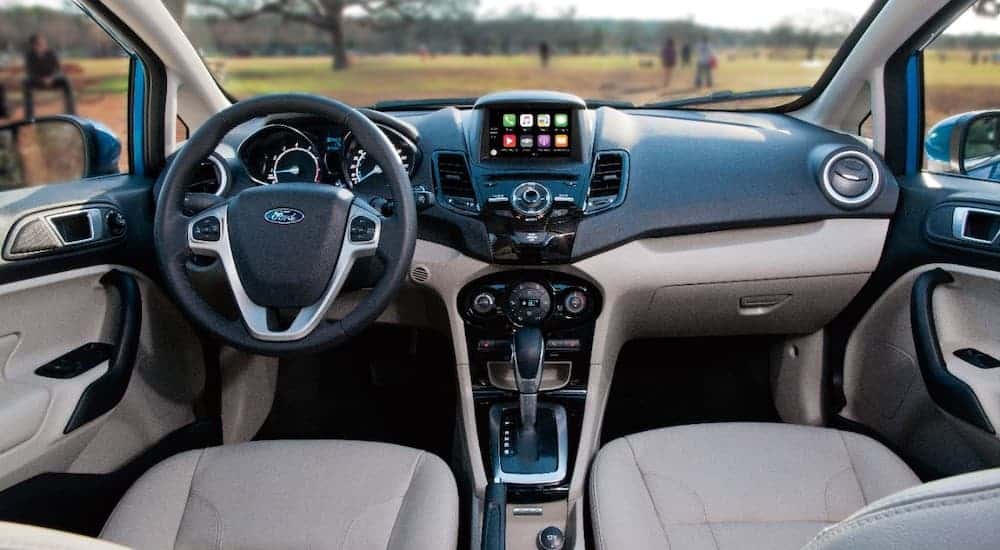There’s a lot to be said about the decision to purchase gently used cars as opposed to the newest model year offerings; especially since the latter might be more likely to catch your eye or capture your heart. In fact, recent years have introduced a sort of enlightenment in terms of our shared cultural perception of pre-owned vehicles.
While, in years past, the purchase of a used car might be viewed as a concession prompted by budget restrictions—it now represents a prudent choice favored by the fiscally savvy. By allowing the original owner to endure the lion’s share of a vehicle’s depreciation, you’re positioning yourself to get more car for less money. You’ll be likely to afford a higher-ranked model or trim level which might not have fit your budget if you had attempted to buy it new.
But with each year of ownership under a vehicle’s belt comes the expectation of wear, tear, the need for maintenance and the potential for repair. So, how do you make sure that the vehicle is deserving of consideration? How do you provide yourself with the assurance needed to buy with confidence and the means of protecting your investment? Well, it all begins with following this used car buying checklist.
Perform Your Due Diligence
Buying a pre-owned vehicle is no different than any other vehicle purchase—if the style of vehicle, make, model or trim level doesn’t meet your needs, it simply isn’t a proper fit for the unique demands of your budget or lifestyle. With that in mind, it’s important to understand your price range and be realistic in discerning your ‘needs’ from your ‘wants.’ Once you have a clear understanding, it’s easier to form a shortlist of late model vehicles that you might want to take a closer look at.
And remember, car shopping is easier now than ever before. Between online dealer inventories and boutique services, you can explore inventory without setting foot on a dealer lot, or entrust a service to seek out the exact make, model, year, trim level and paint color you’re looking for. But assuming that you’re prepared to do the shopping yourself, just remember that you’re accepting more of the burden. Then again, you might also be increasing your likelihood of satisfaction.
Conduct an Exterior Inspection
So, you’ve located a vehicle (or vehicles) that you might be interested in, and have decided to make the trek to the dealership to check it out in person. And while it’s important to recognize that pre-owned vehicles might come with a ding or two, it’s crucial to perform a physical inspection of the vehicle beginning with a walk around to explore its body condition.
As mentioned, a ding or scratch here in there should be expected, but that alone isn’t a red flag communicating lacking care from the previous owner. But large dents or sections of rust, especially in multiple places around the body panels, doors, hood, truck or bumpers might convince you to reconsider that vehicle. This is one area of a physical inspection that doesn’t require a trained eye, just take the time to look.
The same implies to an inspection of the tires, both in terms of outside tread and condition of the sidewall. Any cracks, scuffing, or misshapen areas could be the result of damage requiring immediate attention. In addition, there’s an easy trick to make sure that a tread depth on the tire is acceptable: simply place a quarter (Washington’s head down) in-between the treads and, if you can still see the top of Washington’s head, the tires need replacement.
And while you may not get your hands on the keys until a test drive, be sure to perform a check of all primary, high-beam, safety and signal lights to ensure that they function as needed. Also, make sure that the light housings are intact, devoid of any cracks, damages or moisture leaks. A dealership should take responsibility for such repairs prior to purchase.
Conduct an Interior Inspection
It’s always important to remember that a pre-owned vehicle receives some fresh TLC and refurbishment prior to being put up for sale. This means that there may be wear or damage that could either reduce the vehicle’s asking price or scare you off entirely. And while most dealerships are reputable in the integrity of their resale practices, others might resort to the temporary camouflaging of trouble areas.
First, breathe in deeply through your nose. That’s right, smell-testing is an important car of inspecting a pre-owned vehicle as odor can indicate mold, mildew, or must resulting from water leaks. Lifting floor mats, and exploring the trunk (in addition to the caving) might help you to detect any issues. The same should be done for the headliner, especially if the vehicle comes equipped with a sunroof.
Next: inspect the upholstery visually (including seats, flooring, armrests, and other visible surfaces) being certain to look for worn spots, tears, or gouges in the fabric or material.
Finally, be sure to inspect the gauge cluster and displays to ensure that they are functioning properly, as are any physical or touchscreen controls. Remember, the cabin provides the creature comforts designed for your enjoyment, why risk lackluster performance when you could simply address them beforehand with the dealership?

Under the Hood
This is the one area of inspection where a skilled eye is needed. A look under the hood of a vehicle provides for an understanding of how well that vehicle was maintained. Cleanliness and lubrication, especially around the engine, provide certain assurances, while it’s important to conduct a thorough inspection of belts and hoses, to detect any holes, fraying or cracking.
A quick exploration of the radiator for any leaks or drainage, as well as a quick look at the antifreeze (green is good, orange is bad), are important as well.
But it’s also important to examine the state of other fluids, both in term of condition and levels. There are four primary fluids to be concerned with: oil (which should be dark brown, amber denotes recent changing) transmission (should be pink) power steering and brake. Levels of the latter might have a noticeable effect on the next section.
The Test Drive
Just because everything else passed inspection doesn’t mean a vehicle shouldn’t be test driven. In fact, few people would turn down the chance to drive a vehicle that they’re considering buying. But use this opportunity to see how quickly an engine turns over once you turn/boss the ignition. Lend an ear to its smoothness of shifting, the presence of loud exhaust, road, or wind noise as well as any other inexplicable noises. These should be questioned. In addition, be conscious of vibration, or any handling issues.
Inspection of Identification & Documentation
Every vehicle possesses a vehicle identification number (VIN) located on the dashboard of a vehicle. Especially when engaged in a private sale, it’s important to compare the VIN to the one listed on the vehicle’s registration for any discrepancies which, along with any oddities in the vehicle’s title might imply theft or other fraud. But whether you’re buying from the previous owner or a dealership, the online availability of Vehicle History reports empowers a buyer to confirm that there were no major accidents, repairs or salvage conditions that could secretly compromise the vehicle’s integrity.
What You Get From It = The Effort You Put Into It
In this sense, a car becomes an investment like any other. Put minimal effort into your search for the perfect fit, the steps you take to confirm the worthiness of an investment or be unwilling to nurture that investment and it’s likely to bring you its fair share of disappointment.
So your satisfaction with the purchase of any pre-owned vehicle comes down to what you’re willing to put into it. Here at CheckEngine.com, we’re big believers in the importance of paying attention to vehicles; and if you begin doing so before you drive a pre-owned car, truck or SUV off the lot, you’re likely to get the most from it across the duration of your ownership.

